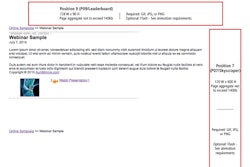Is physician self-referral truly a problem if imaging growth is in line with other medical expenditures? That's one suggestion -- disputed by the American College of Radiology -- included in a new report commissioned by the American College of Cardiology.
Representatives from the ACC and other specialties traveled to Capitol Hill earlier this month to release the report, produced by the Lewin Group, a healthcare policy research and management consulting firm based in Falls Church, VA.
The ACC report and the ACR's rebuttal are the latest efforts to influence public and policy-maker opinion as to who should be allowed to provide imaging services in the U.S.
The stakes rose in January when the Medicare Payment Advisory Commission (MedPAC) recommended that Congress mandate privileging standards that would limit who could provide imaging to Medicare patients. The MedPAC recommendations are akin to proposals advocated by the ACR.
Among MedPAC's rationales is its finding that Medicare payments for diagnostic imaging services grew more rapidly than any other type of physician service between 1999 and 2003.
"While the sum of all physician services grew 22% in those years, imaging services grew twice as fast, by 45%," MedPAC executive director Mark Miller told a congressional subcommittee at a hearing in March.
The new ACC/Lewin report offers an alternative analysis, noting that the growth rate for imaging services from 2001 to 2003 was lower than the growth rate for all Medicare Part B services.
In its rebuttal, the ACR contends that the report's conclusion is based on inappropriate inclusion of durable medical equipment, clinical labs, ambulances, and other services that aren't part of the physician fee schedule.
Additional conclusions in the ACC/Lewin report:
"Shifts in site of service from hospitals to physicians' offices account for a significant share of the growth in imaging services. For example, 23 and 28% of the growth in the number of technical components services for nuclear medicine and ultrasound of the heart is explained by a shift in site of service from the hospital to physicians' offices."
"Self-referral does not appear to explain the majority of growth in imaging services, as our analysis indicates significant growth in imaging services primarily done by radiologists."
Responding to the first conclusion, the ACR noted the report didn't dispute MedPAC's conclusion that only 20% of imaging growth is due to shifts in service site.
Regarding the latter, the ACR stated that: "Medicare data show that imaging utilization growth among nonradiologists is up to more than twice that of radiologists, particularly in the in-office setting. Therefore, at current growth rates, nonradiologists will soon do the majority of nonhospital CT and MRI where there are few established quality oversights."
One conclusion from the ACC/Lewin report that wasn't specifically rebutted by the ACR was the following:
"If self-referral was an important driver of the number of imaging services, we would have expected acceleration in the growth of imaging services from 2001 to 2003 to offset reductions in physician income due to the reductions in the (Medicare fee schedule) conversion factor," the authors wrote. "This did not occur."
By Tracie L. Thompson
AuntMinnie.com staff writer
April 18, 2005
Related Reading
'Intensity' study adds to radiology's case on self-referral, April 5, 2005
CA self-referral bill pulled, April 4, 2005
U.S. Congress hears debate over federal imaging standards, March 17, 2005
Cardiology leader slams ACR's imaging initiatives, March 10, 2005
AuntMinnieTV: Study takes aim at physician self-referral, February 18, 2005
Copyright © 2005 AuntMinnie.com


















